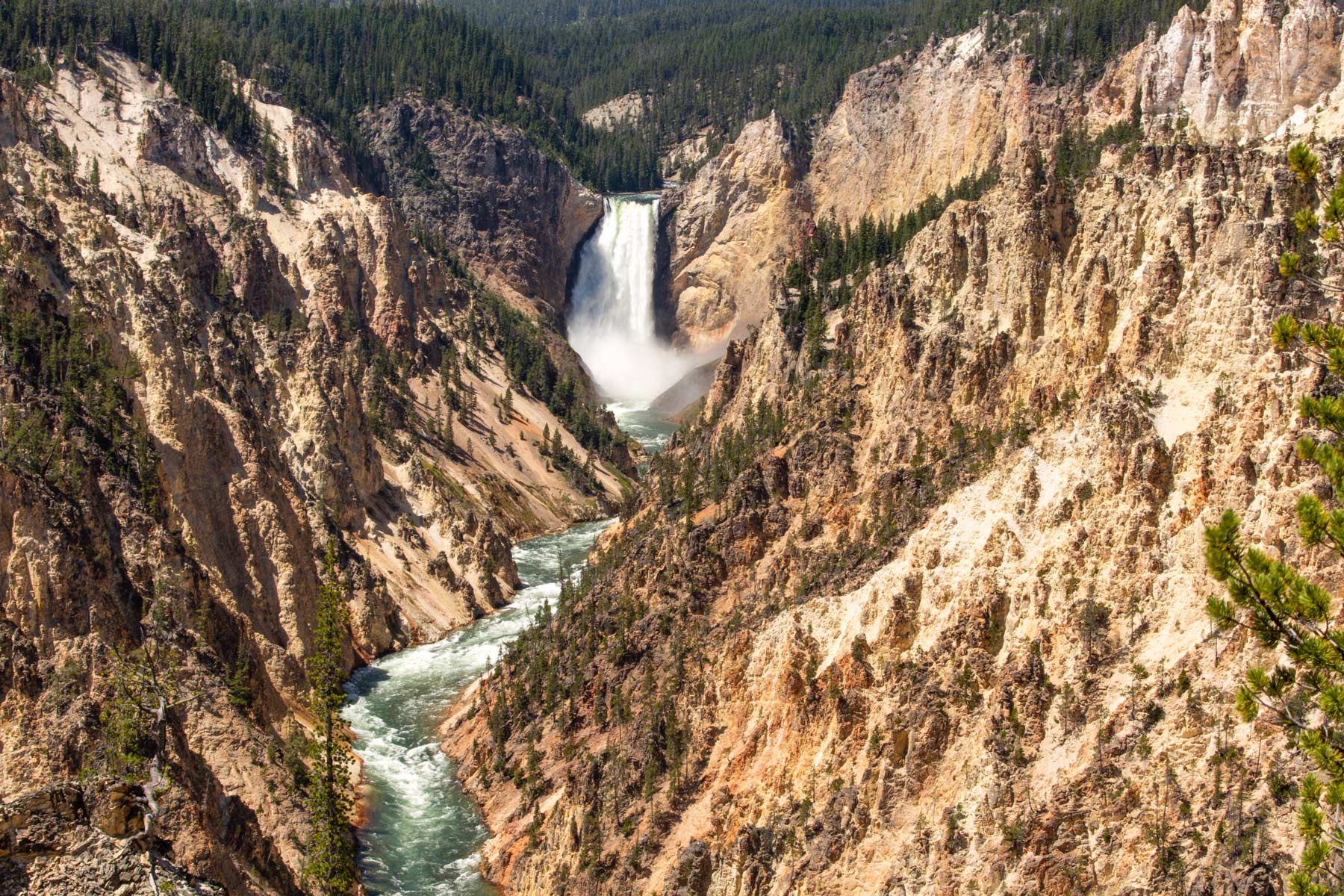
Article Summary: Yellowstone National Park Facts
Yellowstone National Park Facts! In this article, we provide you with 18 amazing facts about one of America’s most magnificent national parks.
More Than Just Parks is your one-stop-shop when it comes to learning everything you’ll need to know about America’s national parks. We’ve got expert guides, beautiful photos, helpful tips, breathtaking films and so much more.
I’ve been to so many of these amazing places since retiring from teaching in 2018. Did I mention that I taught history? I spent a lifetime teaching about the history behind some of these natural wonders. Then I got to see them firsthand.
And now I’m sharing some of the incredible stories about these beautiful places with you. It doesn’t get any better than that!
More Than Just Parks takes a deeper dive with its national park facts. We’ve done our homework so that you’ll get more than you bargained for.
Without further ado, let’s dive in.
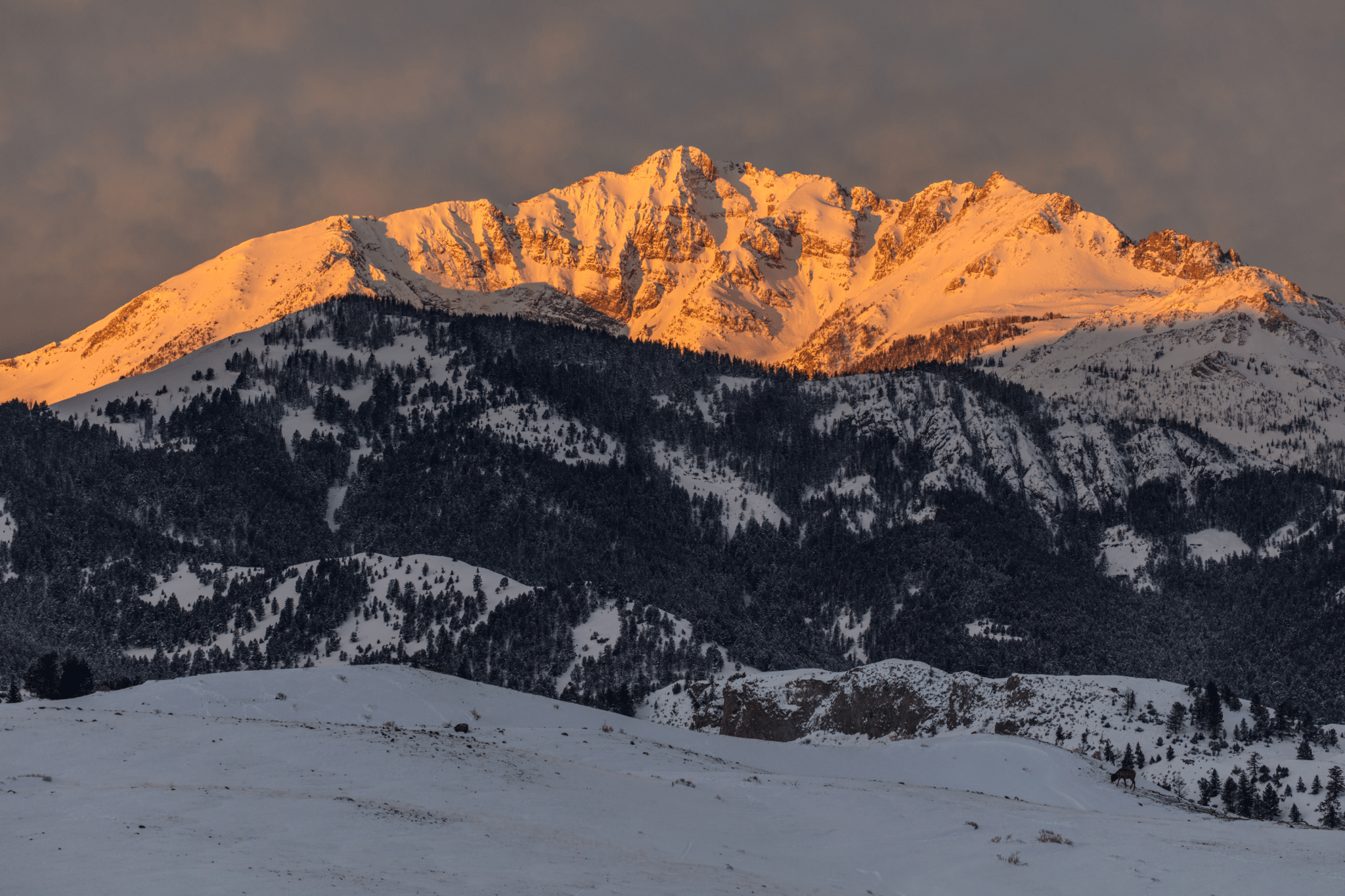
Yellowstone National Park Facts
Table Of Contents: Yellowstone National Park Facts
Table Of Contents: Yellowstone National Park Facts
- Yellowstone National Park Facts
- Facts About Yellowstone National Park
- Top 5 Yellowstone National Park Facts
- 1. Yellowstone Contains Some Of The Oldest Rocks In The World
- 2. The Park Is One Of The World’s Largest Active Volcanic Systems
- 3. More Than 1,850 Archaeological Sites Have Been Documented In Yellowstone National Park
- 4. Some 27 Modern-Day Native American Tribes Trace Their Ancestry To Yellowstone National Park
- 5. The First White Man To Visit Yellowstone Was A Member Of The Lewis & Clark Expedition
- Top 10 Yellowstone National Park Facts
- 6. No One Believed The Wonders Of Yellowstone Were Real Until The Washburn-Langford-Doane Expedition
- 7. A Man Who Was Lost & Alone Who Survived 37 Days In Yellowstone
- 8. America’s First National Park Could Have Been The Last
- 9. America’s First National Park Ranger Served At Yellowstone
- 10. America’s First Female Park Ranger Also Served At Yellowstone
- Top 15 Yellowstone National Park Facts
- 11. Yellowstone Features The Largest Concentration Of Wildlife In The Continental U.S.
- 12. Yellowstone Is The Site Of America’s Greatest Concentration Of Geysers & Hot Springs
- 13. Yellowstone Has Some Very High Elevations
- 14. There Are Almost Three Hundred Waterfalls Inside The Park
- 15. Yellowstone is a Super Volcano
- Top 18 Yellowstone National Park Facts
- Meet The Parks Brothers
- Map Of Yellowstone National Park
- We Hope You’ll Follow Our Journey
Facts About Yellowstone National Park
Some Basic Facts About Yellowstone National Park
Among the Wyoming National Parks there’s only one which has the unique distinction of being America’s oldest national park.
In 2020, Yellowstone National Park attracted 3.8 million visitors.
This park features more than two million acres of a high mountain-ringed plateau which have been set aside for permanent protection as a natural preserve.

Where to Stay in Yellowstone
Planning a trip to Yellowstone and haven’t found the right spot to stay? We’ve compiled a complete guide on the best places to stay in Yellowstone here.
Now Here Are Some Basic Facts
- Location: Idaho, Montana & Wyoming
- Acreage: Yellowstone encompasses 3,472 square miles (2,221,766 acres) which makes it larger than Rhode Island and Delaware combined.
- Visitation: The park hosted 4,860,537 recreation visits in 2021, up 28% from 2020 (3,806,306 visits), making it the busiest year on record.
- Highest Elevation: 11,372 feet.
- Lowest Elevation: The lowest point in Yellowstone is Reese Creek at 5,282 feet.
- Climate: In Yellowstone National Park, the summers are short, comfortable, dry, and mostly clear and the winters are freezing, snowy, and partly cloudy. Over the course of the year, the temperature typically varies from 4°F to 76°F and is rarely below -15°F or above 84°F.
- When Did It Become A National Park? Yellowstone became a national park on March 1, 1872. When President Ulysses S. Grant signed the Yellowstone National Park Protection Act into law, it protected more than 2 million acres of mountain wilderness, amazing geysers and vibrant landscapes for future generations to enjoy.
CHECK OUT: 10 EPIC Wyoming National Parks Worth Visiting
Top 5 Yellowstone National Park Facts
1. Yellowstone Contains Some Of The Oldest Rocks In The World
As a retired history teacher and lifelong history buff, I always try to have a blast with the past. And, when it comes to the past, there’s nothing older than “geologic time.”
That being said, one of my favorite Yellowstone National Park Facts has to do with the age of some of its rocks.
Believe it or not, today’s mountainous regions of Yellowstone northernmost area between Mammoth and the western edge of the Lamar Valley contain some of the oldest rocks in the world which were formed approximately 2.5 billion years ago.
According to the National Park Service, the landscape of the Greater Yellowstone Ecosystem is the result of various geological processes over the last 150 million years. Here, Earth’s crust has been compressed, pulled apart, glaciated, eroded, and subjected to volcanism.
All of this geologic activity formed the mountains, canyons, and plateaus that define the natural wonder that is Yellowstone National Park.
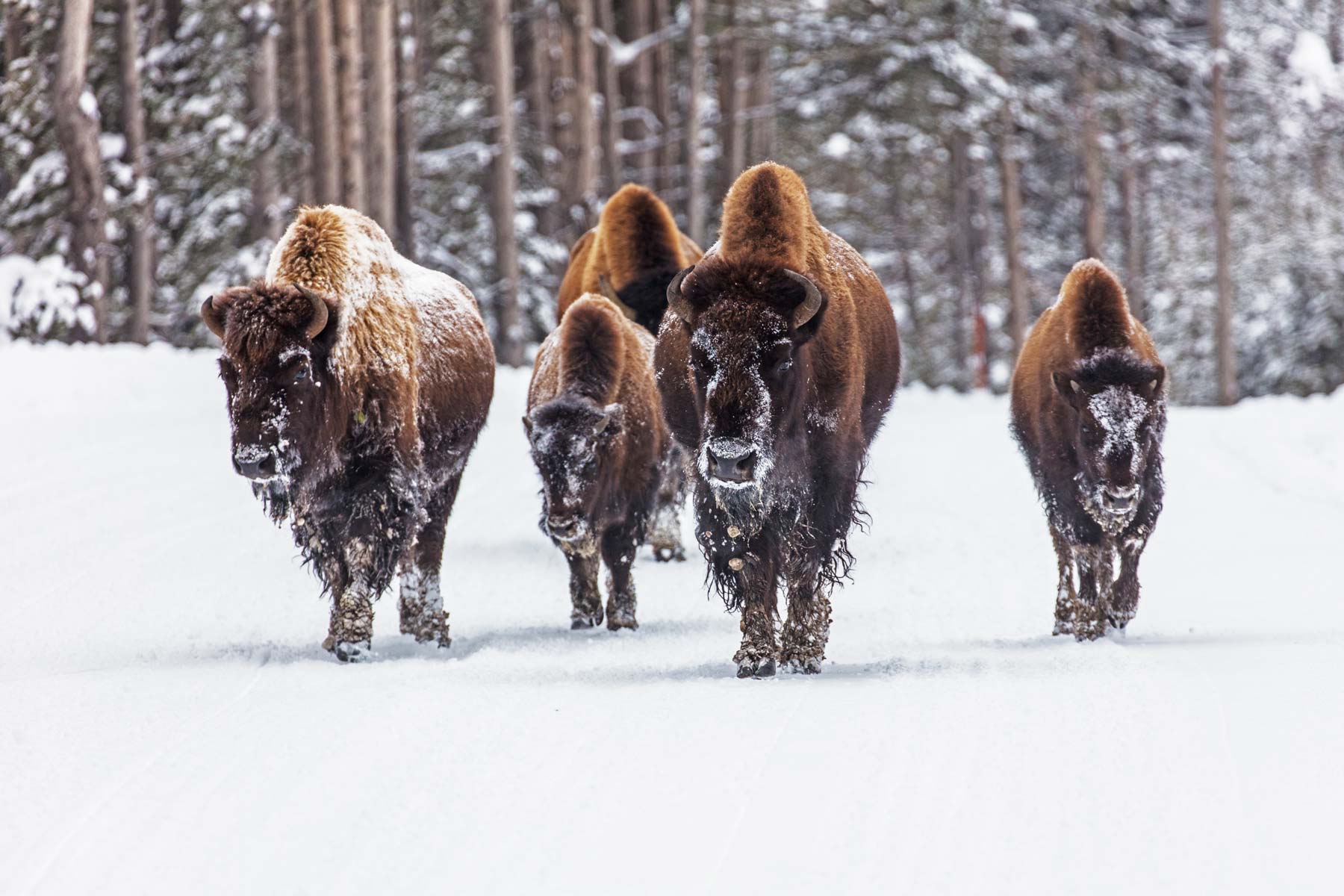
CHECK OUT: 25 Bucket List Famous Landmarks In America (MUST-SEE)
2. The Park Is One Of The World’s Largest Active Volcanic Systems
Long before it became Yellowstone National Park, this area was the site of a massive volcanic explosion, which is another of the fascinating Yellowstone National Park Facts.
Occurring some two million years ago, the volcanic explosion ejected material from the earth equivalent to 6,000 times greater than the Mount St. Helens eruption in 1980.
While it may have been the greatest volcanic eruption of all time, what we do know is that it created a vast caldera in the park’s central region.
Yellowstone is one of the world’s largest active volcanic systems.
It has produced several giant volcanic eruptions in the past few million years, as well as many smaller eruptions and steam explosions.
Although no eruptions of lava or volcanic ash have occurred for many thousands of years, future eruptions are likely.
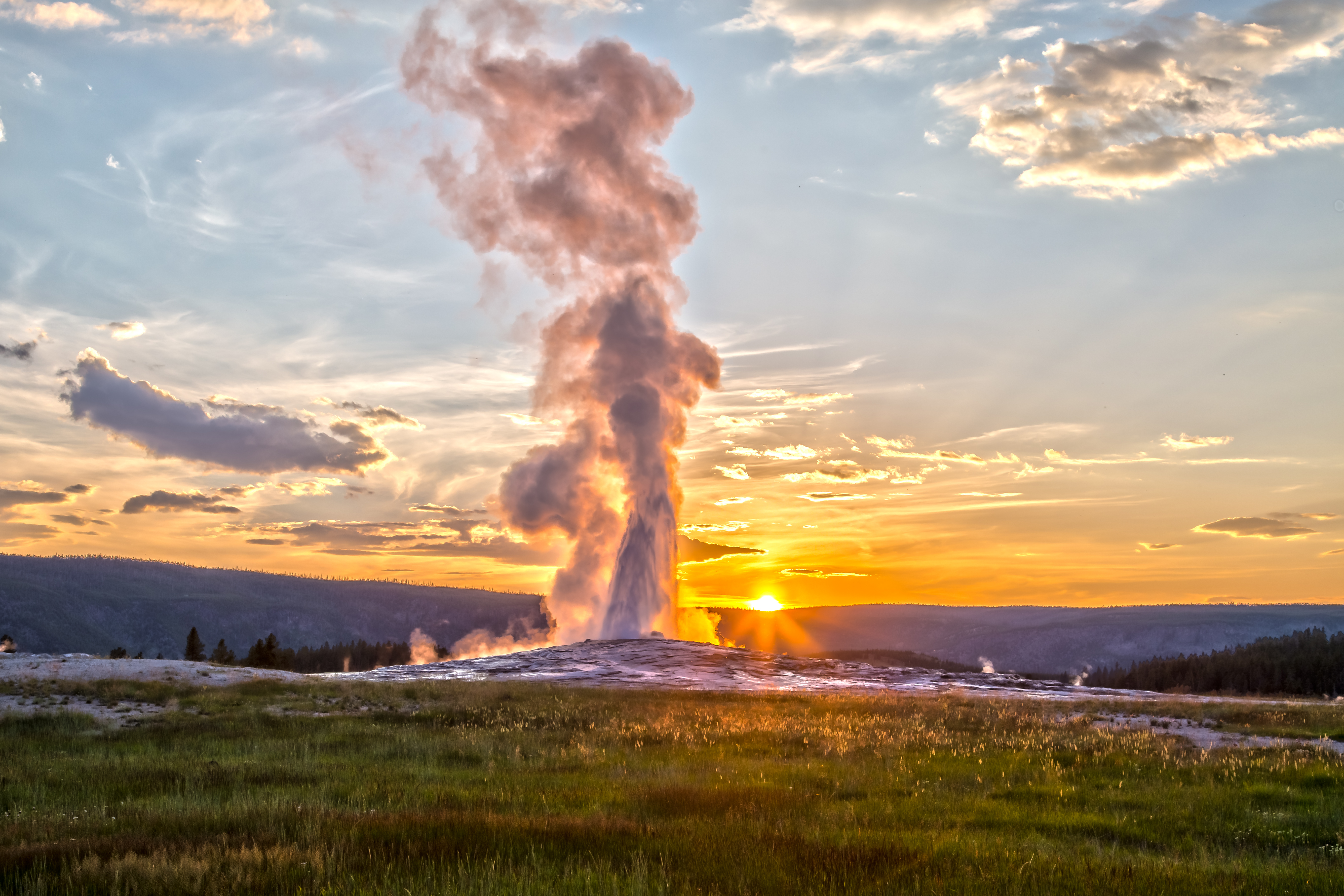
CHECK OUT: 11 AMAZING Acadia National Park Facts
3. More Than 1,850 Archaeological Sites Have Been Documented In Yellowstone National Park
Another of the fascinating Yellowstone National Park Facts has to do with the incredible number of documented archaeological sites in the park.
There are also several historic period sites in the park that date back to the early 1800s when Euro-American explorers, mountain men, and settlers first arrived in the area.
These sites include trapper cabins, homesteads, and mining operations.
The park also contains several historic buildings from the early days of the park, including the Old Faithful Inn, which was built in 1903 and is considered one of the best examples of National Park Service rustic architecture.
Overall, the rich cultural history of Yellowstone provides a glimpse into the lives and experiences of the people who have lived and traveled through the park over thousands of years.
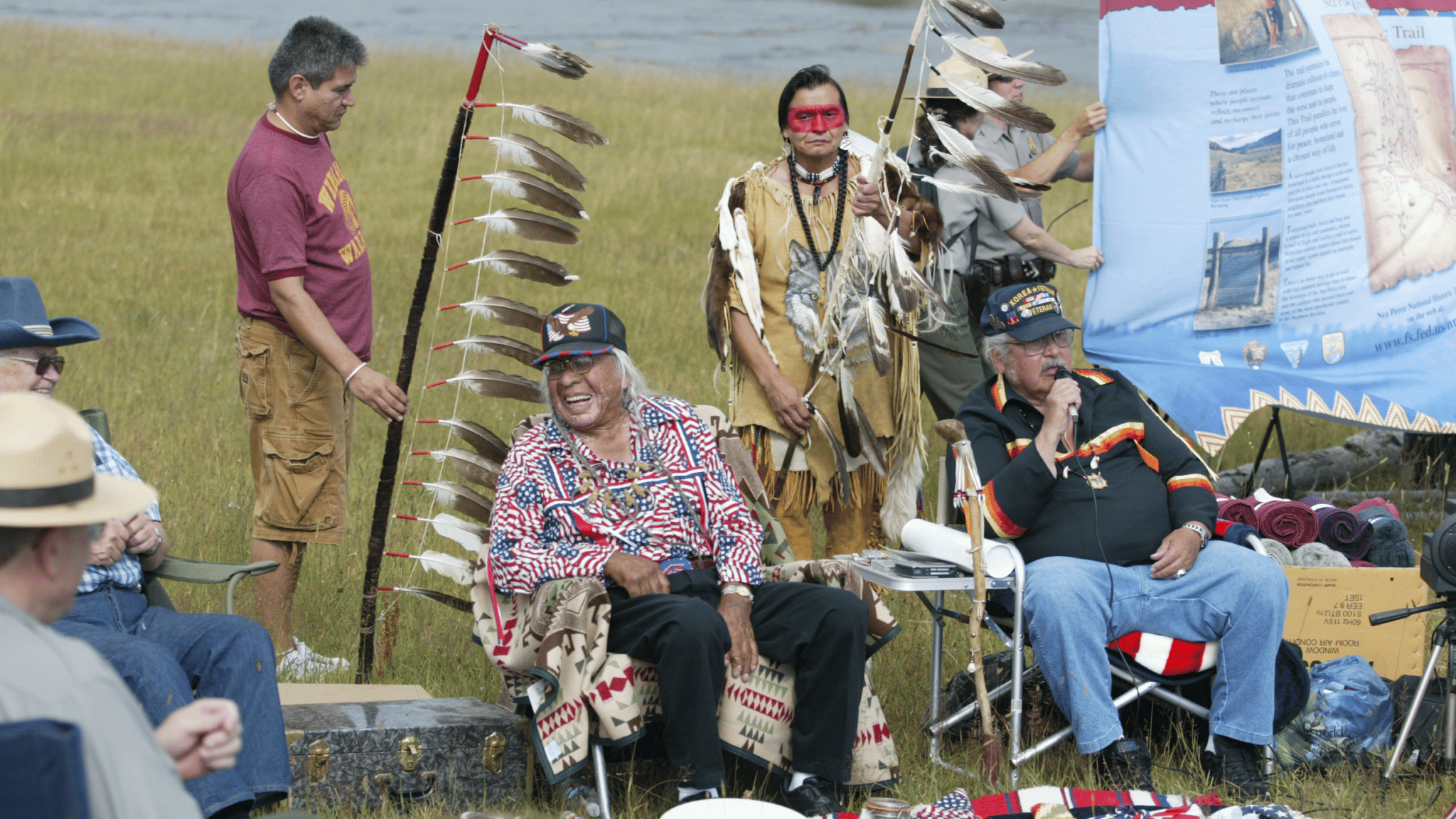
Clovis People In Yellowstone
The Paleoindian Period refers to a time approximately 12,000 years ago at the end of the last ice age when humans first appeared in the archeological record in North America.
One of the original groups to enter what is now Canada and the United States was the Clovis culture. Based on archaeological evidence, approximately 11,000 years ago Clovis peoples were traveling across Yellowstone.

RELATED: 14 BREATHTAKING National Park Videos to Inspire Your Next Trip
4. Some 27 Modern-Day Native American Tribes Trace Their Ancestry To Yellowstone National Park
I have to confess that this has been one of my favorite articles to research and write given the incredible history of America’s First National Park.
Another of the intriguing Yellowstone National Park Facts has to do with the park’s historic connections to so many different Native American tribes – 27 that we currently know of.
Yellowstone’s location at the convergence of the Great Plains, Great Basin, and Columbia Plateau Indian cultures means that many Native American tribes have traditional connections to the land and its resources.
For thousands of years before the park was established, this area was a place where Native Americans hunted, fished, gathered plants, quarried obsidian, and used the thermal waters for religious and medicinal purposes.

List Of Associated Tribes
According to the National Park Service, the following tribes are associated with Yellowstone:
- Assiniboine and Sioux
- Blackfeet
- Cheyenne River Sioux
- Coeur d’Alene
- Comanche
- Colville Reservation
- Crow
- Crow Creek Sioux
- Eastern Shoshone
- Flandreau Santee Sioux
- Gros Ventre and Assiniboine
- Kiowa
- Little Shell Chippewa
- Lower Brule Sioux
- Nez Perce
- Northern Arapaho
- Northern Cheyenne
- Oglala Sioux
- Rosebud Sioux
- Salish and Kootenai
- Shoshone–Bannock
- Sisseton Wahpeton
- Spirit Lake
- Standing Rock Sioux
- Turtle Mountain Band of the Chippewa
- Umatilla Reservation
- Yankton Sioux (Source: NPS)
RELATED: 15 BEST Things To Do In Yellowstone National Park
5. The First White Man To Visit Yellowstone Was A Member Of The Lewis & Clark Expedition
Many Americans are familiar with the Lewis & Clark Expedition, but few know the name of John Colter.
Though party to one of the more famous expeditions in history, Colter is best remembered for explorations he made during the winter of 1807–1808, when he became the first known person of European descent to enter the region which later became Yellowstone National Park and to see the Teton Mountain Range.
Colter was a skilled mountain man and explorer who journeyed to the Pacific with the Lewis and Clark Expedition from 1803 to 1806. And historians agree that Colter set out from a fur-trading fort at the mouth of the Big Horn River in 1807, but after that historians disagree on where he went next.
According to Yellowstone National Park Historian Lee Whittlesey, “About 40 percent of historians think Colter never entered [Yellowstone], and 60 percent think he did.”

The Colter Stone
One major clue emerged from an Idaho field in 1933, when a farmer outside of Tetonia dug up an intriguing artifact: a piece of rhyolite crudely carved in the shape of a human head, with the words “John Colter” scrawled on one side and “1808” on the other.
The location of the so-called Colter Stone would suggest that Colter did travel via the Teton Pass route into Yellowstone—if it really is a relic of the journey.

For a complete list, check out our article on all of the Best Things to Do in Yellowstone National Park
Top 10 Yellowstone National Park Facts
6. No One Believed The Wonders Of Yellowstone Were Real Until The Washburn-Langford-Doane Expedition
Before it became America’s first national park, people explored this fantastic place. They told tales of its magnificent beauty and amazing natural wonders. Few people believed them, however, which is one of the more amazing Yellowstone National Park Facts.
In 1869, C.W. Cook saw some of Yellowstone’s incredible geysers with two traveling companions. Cook was so moved by his experience that he submitted an article to Lippincott’s magazine.
He received a curt reply from them which read as follows: “Thank-you, but we do not print fiction.”
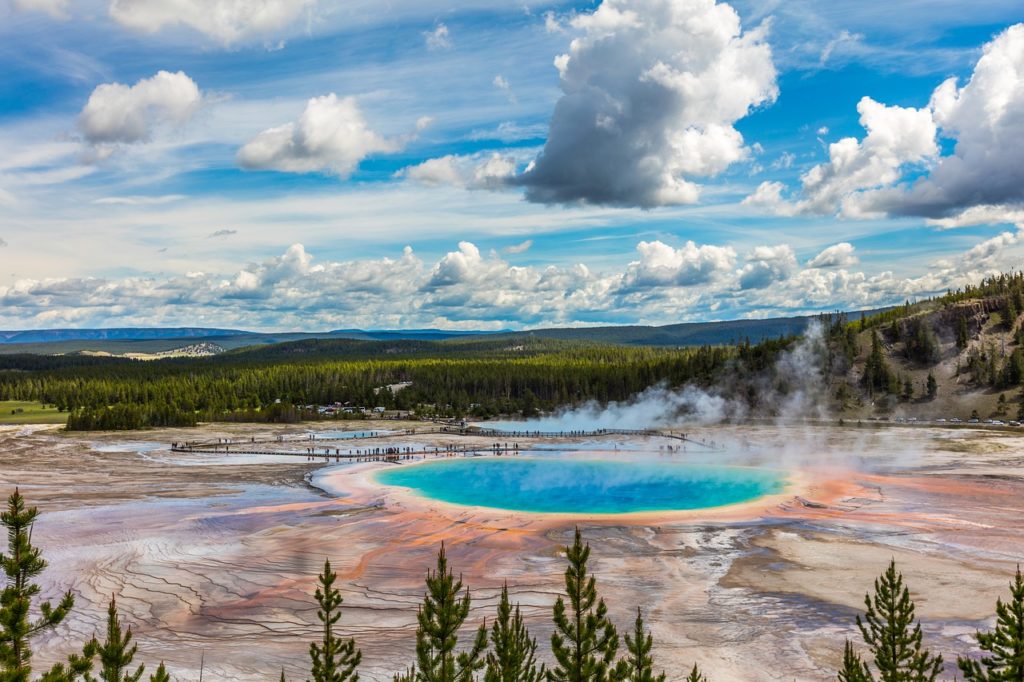
Henry Washburn & Nathaniel Pitt Langford
It was left to the Washburn Party, led by Henry Washburn and Nathaniel Pitt Langford, to convince a skeptical public that this place was as magnificent as people were describing it.
Members of the party made detailed maps and observations of the region, explored numerous lakes, climbed mountains, and observed an incredible array of wildlife.
The Washburn Party traveled to the Upper and Lower Geyser Basins. They were so fascinated by the regular eruptions of one geyser in particular that they decided to name it Old Faithful.
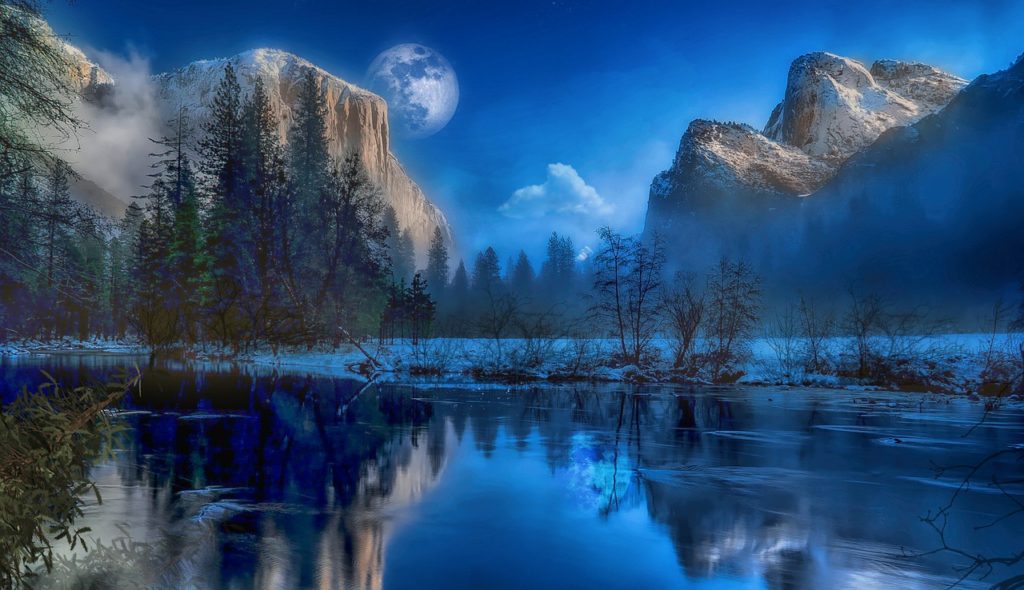
The Official Report Of The Washburn Party
The official report of the Washburn Party was written by Lieutenant Gustavus C. Doane. He described, day by day, what the party saw in Yellowstone.
As Freeman Tilden writes, “He [Doane] climbed the peak now known as Mount Washburn on a day when the pure air of the country revealed everything with crystal clarity.
He saw the snowy summits above the Gallatin Valley, and from them traced almost an unbroken circle of mountains, of which he thought the Tetons were a part.” (Source: The National Parks, Freeman Tilden)
Doane’s report authenticated earlier descriptions of Yellowstone. A skeptical public finally began to believe these fantastic tales of this wilderness wonderland.
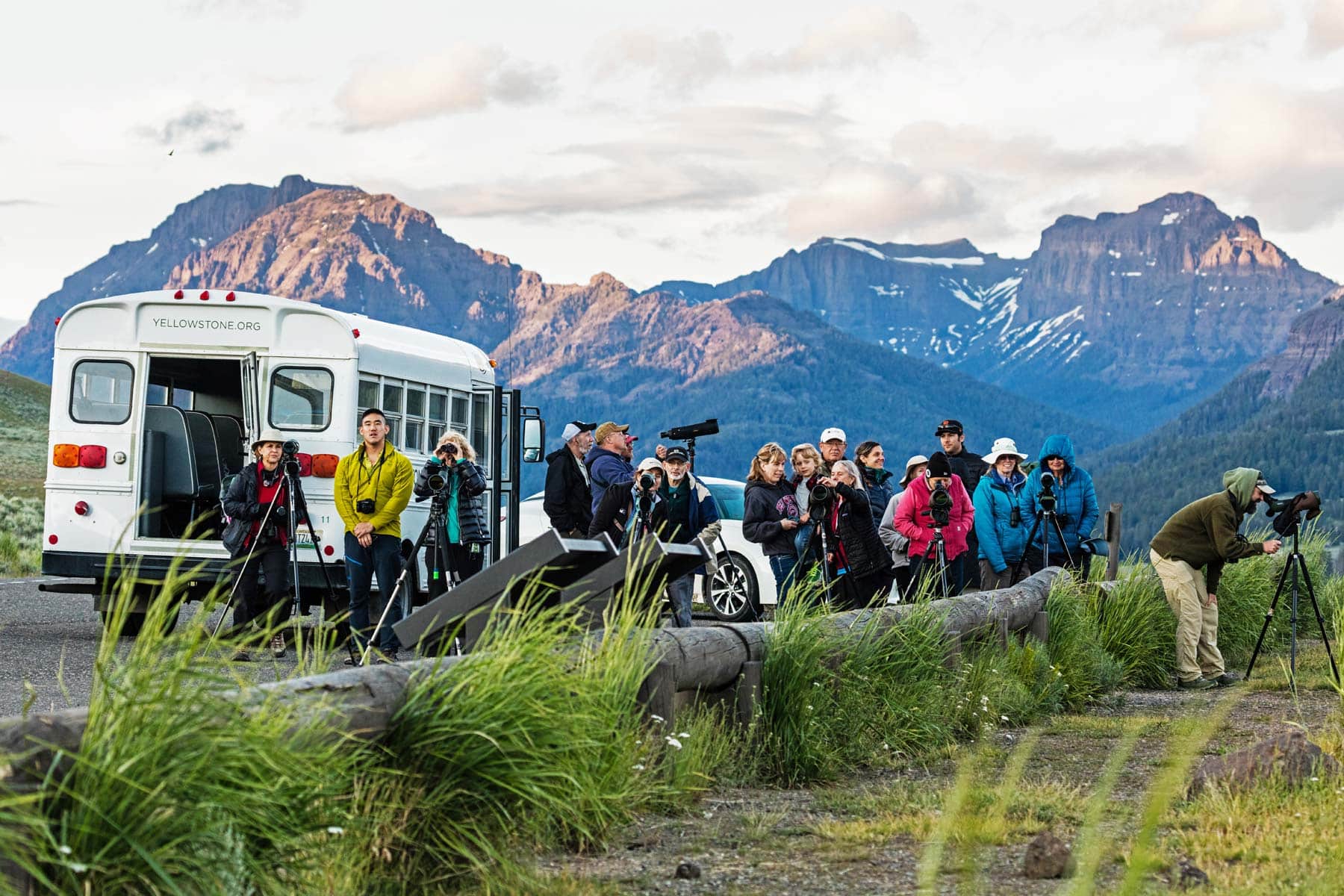
7. A Man Who Was Lost & Alone Who Survived 37 Days In Yellowstone
It’s best to stay with the group when you’re unfamiliar with your surroundings. How many times have you heard your mother say that?
The tale of Truman C. Everts proves that mom was right. And it’s one of the more incredible of the Yellowstone National Park Facts.
Everts was part of the Washburn Party. He convinced himself that he had an uncanny ability to find his way around despite the fact that, like the rest of his party, he had never been to Yellowstone before. Everts took one short cut too many however.
He was separated from his party and remained lost for the next 37 days. Everts almost perished as a consequence of his folly.
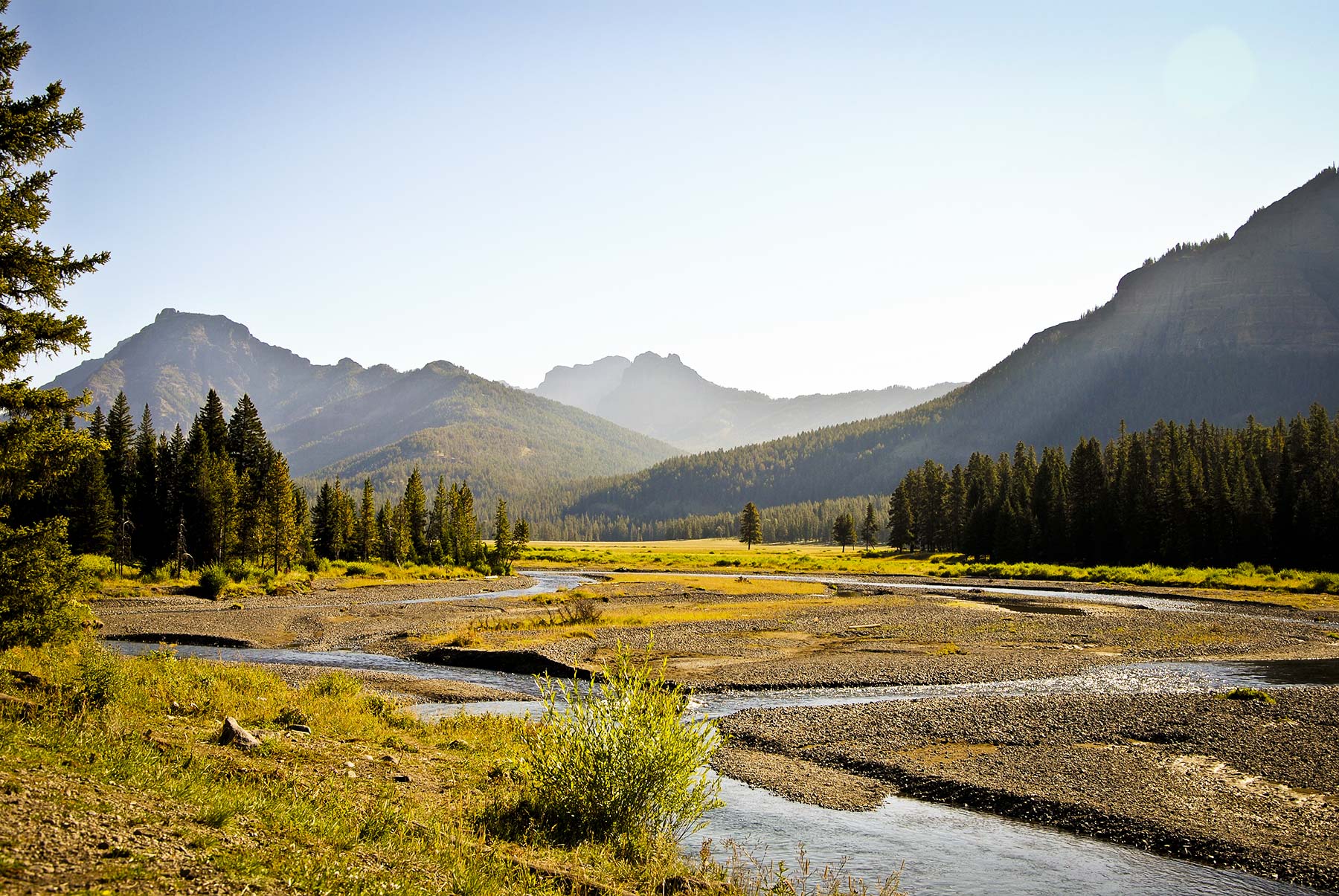
Things Go From Bad To Worse For Truman
On September 9, 1870, Everts managed to lose the horse carrying most of the supplies for the expedition He then attempted to retrace the expedition’s route in the hope of finding his companions.
Had he stayed in place, the other members of his party likely would have found him, but the intrepid Everts believed he could find his way back by himself.

Staying Alive
Everts ate whatever he could, including a songbird and small fish, just to stay alive. He also subsisted on a local thistle plant which would later be named “Everts Thistle” in his honor.
The weather turned cold and, at one point, the hapless Everts was stalked by a mountain lion. Things were looking bleak indeed!

Thus began a terrible odyssey in which Everts would be beset by a series of calamities, guided by visions, and hammered by autumn weather in the mountains. September in Yellowstone country can be a beautiful time of year, but for Everts, it was nearly fatal.
–Lost in Yellowstone, The Misadventures of Truman Everts, Outside Magazine
An Incredible Rescue
The Washburn Party, believing Everts to be dead, returned to Helena. They offered a $600 reward for his remains. The reward money attracted the interest of two local mountain men named “Yellowstone Jack” Baronett and George A. Pritchett.
Remarkably, the mountain men retraced his steps and found the hapless Everts. He was suffering from frostbite and other injuries.
When they found him, Everts weighed less than a hundred pounds. He was completely delirious. One of the men nursed him back to health while the other went for help.
Everts later published a personal account of his experience titled. “Thirty-Seven Days of Peril.” As a result of his celebrity, he was offered the job as the first superintendent of Yellowstone National Park. He turned it down. Can you blame him?
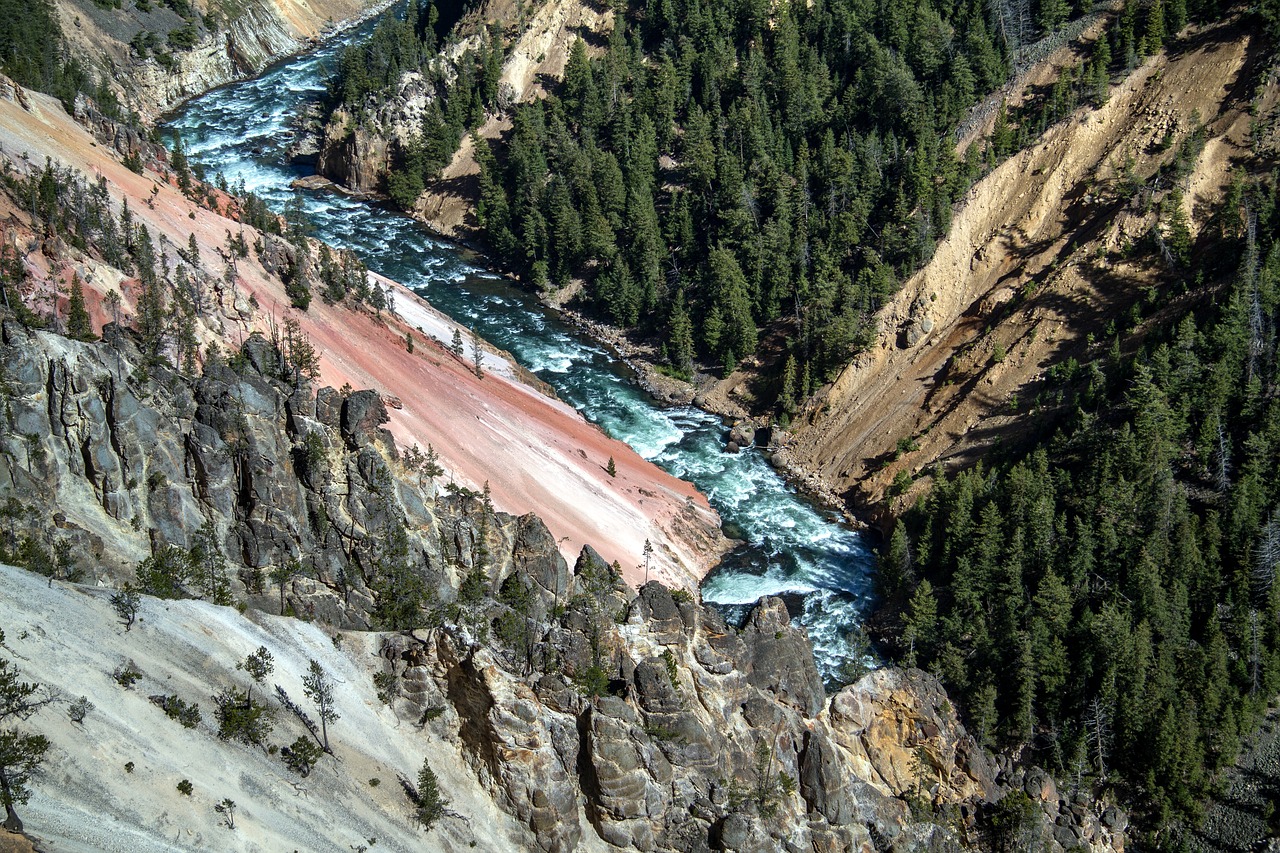
8. America’s First National Park Could Have Been The Last
Yellowstone National Park was established by an act of Congress which was signed into law by President Ulysses S. Grant on March 1, 1872.
Ten years later, however, America’s first national park was in danger of becoming its last, which is another fascinating Yellowstone National Park Fact.
A contract, which was negotiated between the Department of the Interior and the Yellowstone Park Improvement Company, gave the company the right to “rent” the park out to private parties.
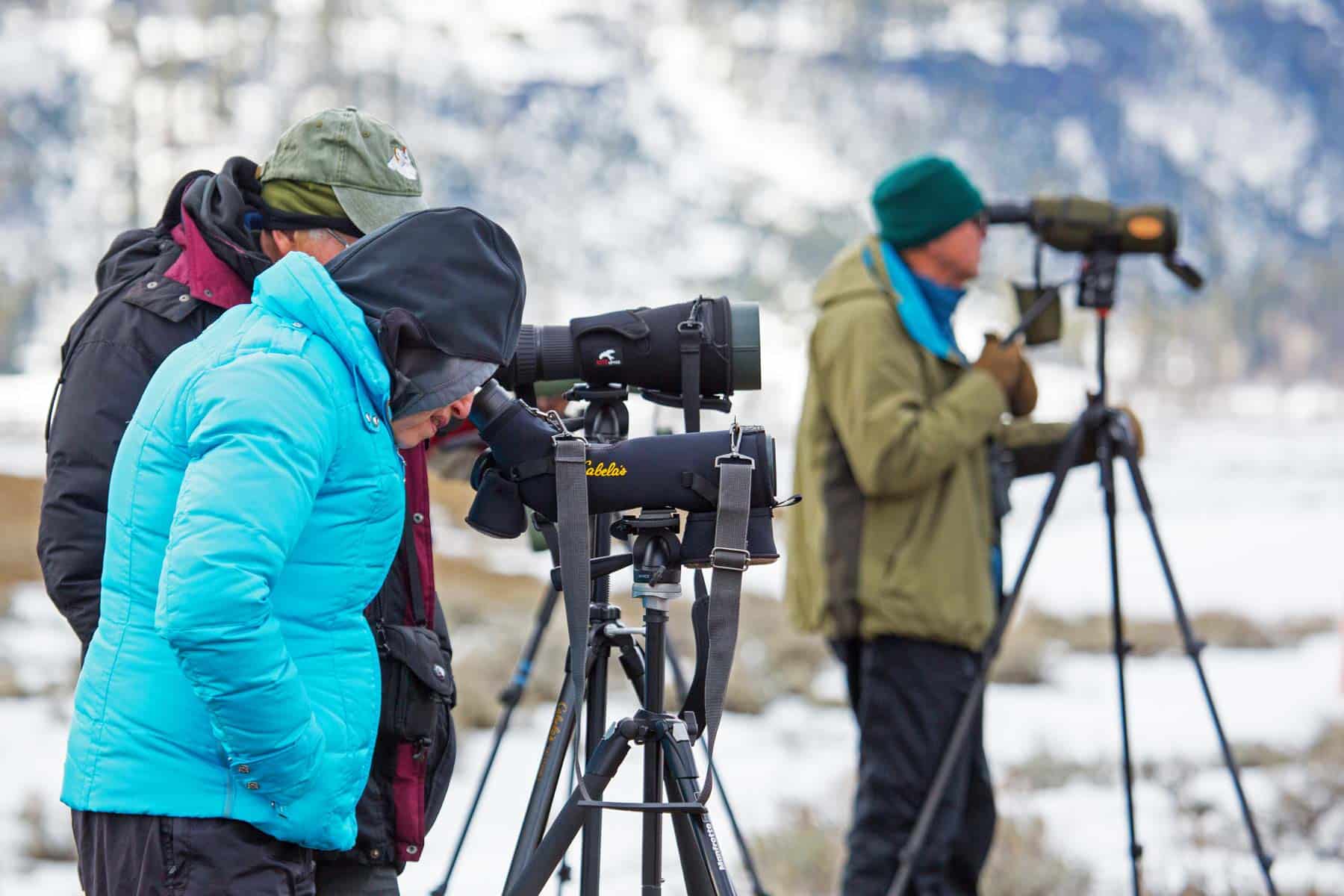
A Private Preserve?
These groups could do whatever they wished. This included the wholesale slaughter of the park’s animals.
Imagine a private preserve where guests could treat one of our nation’s greatest treasures as their own personal property and do whatever they want to it irrespective of the cost.
The wanton destruction on the part of out-of-control visitors threatened to destroy one of America’s greatest natural landscapes.

“To waste, to destroy our natural resources, to skin and exhaust the land instead of using it so as to increase its usefulness, will result in undermining in the days of our children the very prosperity which we ought by right to hand down to them amplified and developed.”
-Theodore Roosevelt
The Pen Is Mightier Than The Sword
For early environmentalists, like George Bird Grinnell, efforts to defile Yellowstone meant the ultimate destruction of some of America’s most precious lands.
Grinnell was the editor and publisher of Forest and Stream, which was an influential magazine featuring hunting, fishing and other outdoor activities in the United States. Proving that the pen is mightier than the sword, he sounded the alarm in a series of blistering editorials.
Grinnell’s editorials were carried in America’s leading newspapers. By defending Yellowstone against commercial interests, he established himself as an early voice of America’s growing conservation movement.
And, he did this long before Theodore Roosevelt was able to use the powers of his great office to protect these sacred places.
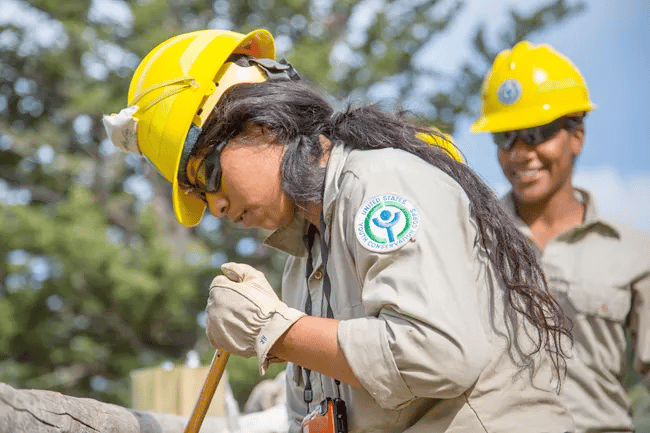
CHECK OUT: George Bird Grinnell – America’s First Environmental Activist
Making Sure That America’s First National Park Would Not Be Its Last
Grinnell understood that America was at an inflection point where the Age of Industry, which had catapulted the U.S. economy to the global forefront, was now in a position to pursue its profits in reckless and dangerous ways. These included the exploitation of the American West.
Grinnell printed weekly editorials promoting legislation to protect Yellowstone ensuring it would be managed solely by the federal government.
He also recruited prominent politicians, such as Commissioner of the U.S. Civil Service Theodore Roosevelt, Speaker of the House of Representatives Thomas Reed and others, to lead the fight in Washington.

Yellowstone National Park Protection Act
By focusing on the imminent threat to Yellowstone from unbridled corporate interests and the poaching which they encouraged, Grinnell was instrumental in helping to secure passage of the Yellowstone National Park Protection Act in 1894.
This act protected the wildlife in Yellowstone National Park. It served as a model for future national parks.
The act punished crimes committed in the park.
As a consequence of these efforts, America’s first national park was not its last.
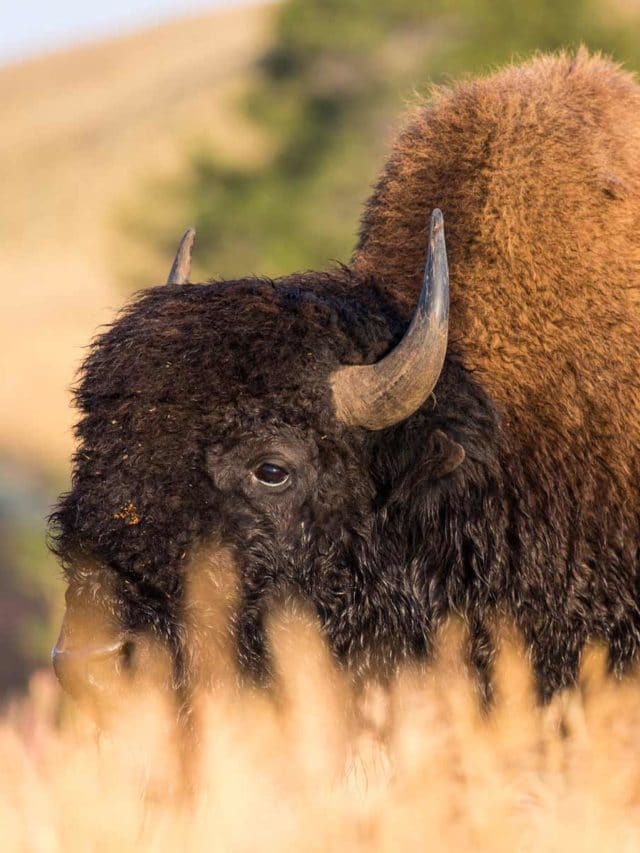
U.S. Army Soldiers Were The Earliest Park Protectors
The earliest protectors of our national parks were not the park rangers we’ve grown accustomed to seeing when we visit these special places. There was no National Park Service in the 19th century and there were no national park service rangers.
Before the National Park Service, Yellowstone was guarded by the U.S. Army. Without these soldiers, we might not have any national parks today.
From 1891 to 1914, Yosemite, Sequoia & General Grant (today Kings Canyon) National Parks were also under the protection of the U.S. Army.
According to Lee Whittlesey, who worked at Yellowstone for 35 years and served as the park historian since 2000, “I would submit the Army went a long way towards protecting an area that had very little protection and turned it into a place of relative tranquility, where tourists could enjoy it while also protecting its wonders.” (Source: Jim Morrison, “How The U.S. Army Saved Our National Parks,” Smithsonian Magazine)
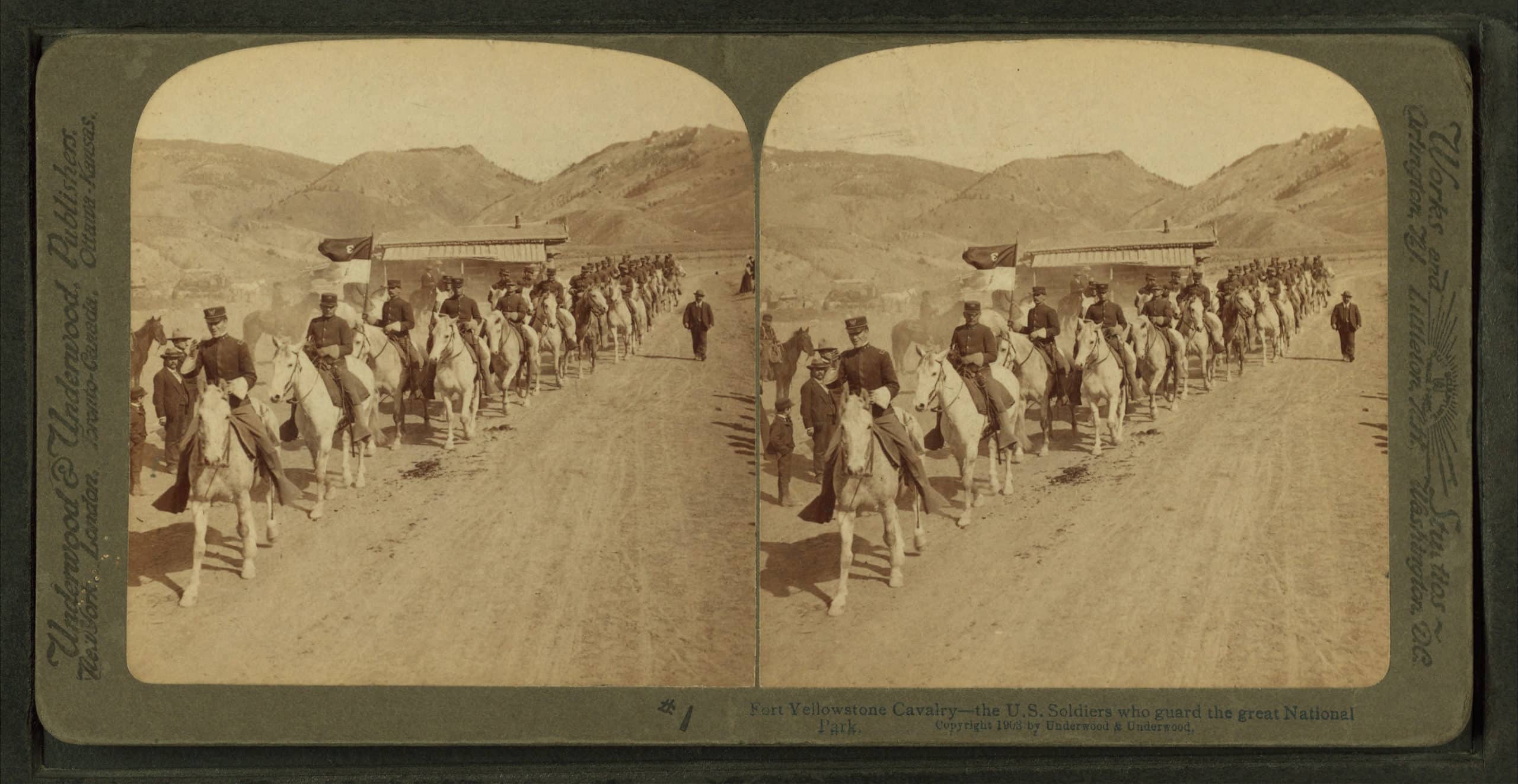
“The officers and enlisted men have cheerfully endured many hardships and privations, and in the midst of great dangers steadfastly maintained a most gallant and zealous devotion to duty, and they may well be proud of the record made, and rest assured that the hard work undergone in the accomplishment of such important and valuable service to their country cannot fail, sooner or later, to meet with recognition and reward.”
-Benjamin H. Grierson, Colonel 10th U.s. cavalry
9. America’s First National Park Ranger Served At Yellowstone
One of my favorite Yellowstone National Park Facts (and stories) is the tale of the man who became America’s first national park ranger.
Harry S. Yount had served as a Union soldier during the Civil War. Afterwards, he spent his time in the American West working as a bullwhacker (a driver of an ox wagon or other heavy freight wagon), guide and doing various other jobs.
While hunting was legal, too much wildlife was being slaughtered. “Rocky Mountain Harry,” as he was known at the time, was hired by Yellowstone National Park to protect endangered animals from commercial hunters. After fourteen months, he quit his job complaining that the park was simply too large for one man to patrol.
While his official job title had been “gamekeeper,” later National Park Service (NPS) historians would credit Yount as being the nation’s first “national park ranger.”

CHECK OUT: A Brief (& Informative) History Of America’s National Park Rangers
10. America’s First Female Park Ranger Also Served At Yellowstone
Just when you thought we couldn’t come up with any more fascinating Yellowstone National Park Facts we come up with another one.
Yellowstone National Park not only produced America’s first national park ranger, it also produced America’s first female park ranger.
In 1921, Marguerite Lindsley was one of three women to be appointed as season Park Rangers by Superintendent Horace Albright.
In 1925, she became the first permanent female Park Ranger. Lindsley was the perfect choice for this position.
Not only did she hold a degree in bacteriology, she also had an immense passion for Yellowstone and enjoyed teaching the public about the wonders to be found here.
Marguerite’s love for Yellowstone was no doubt born from her childhood here. Lindsley’s father, Chester Lindsley worked as a civilian clerk for the Army when she was child, and the family lived in Mammoth.
Her father also served as the interim Superintendent during the transition from the Army to the National Park Service.
Her contributions to the park were not limited to her work as a ranger, she also played a key role in the formation of the park’s junior ranger program and was instrumental in the creation of the park’s first nature trail.
Lindsley’s pioneering spirit and passion for Yellowstone helped pave the way for future female park rangers and her legacy continues to inspire new generations of park enthusiasts.
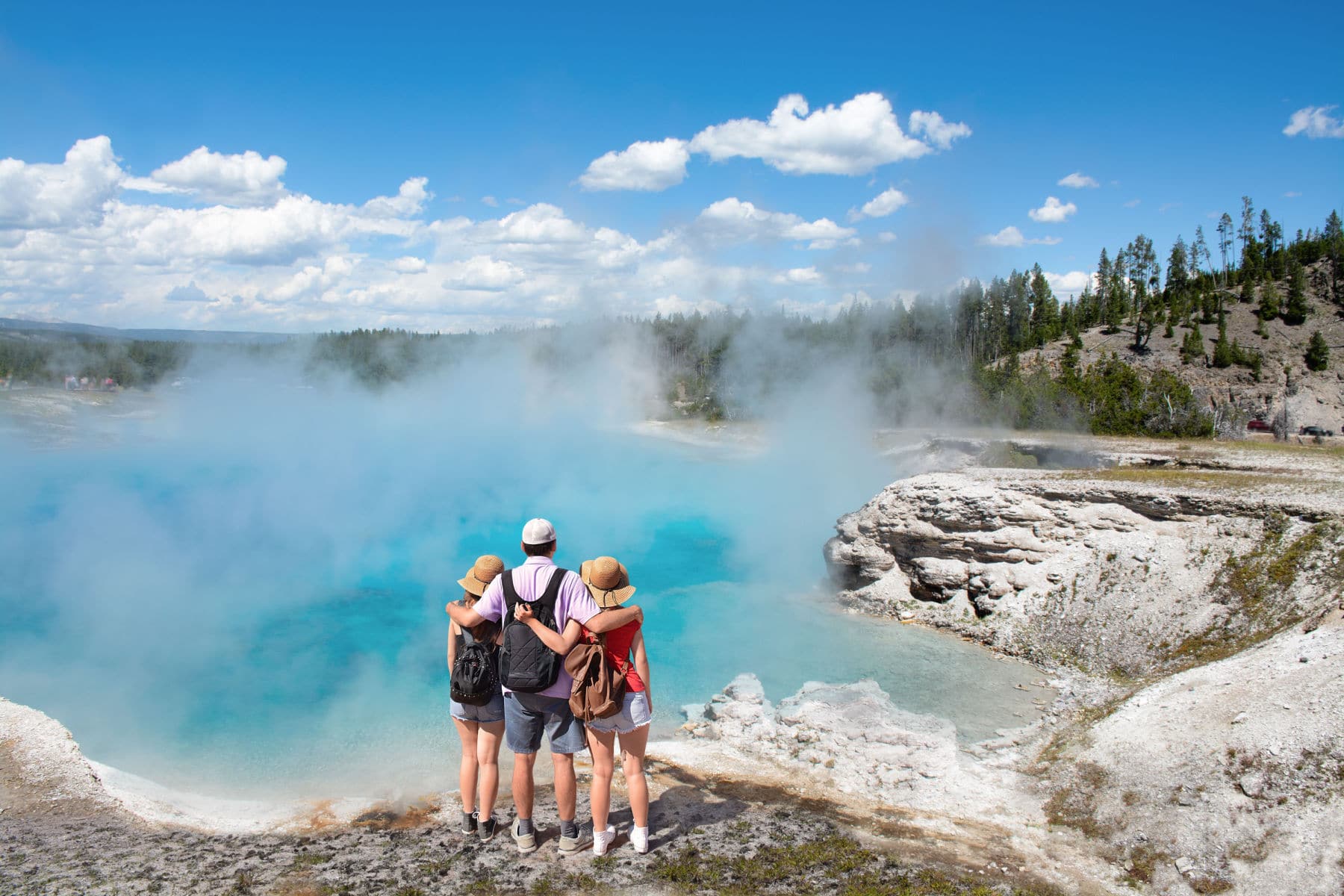
CHECK OUT: A Brief (& Informative) History Of America’s National Park Rangers
Top 15 Yellowstone National Park Facts
11. Yellowstone Features The Largest Concentration Of Wildlife In The Continental U.S.
Yellowstone is one of the world’s principal wildlife reserves with nearly 300 species of birds, 16 species of fish, five species of amphibians, six species of reptiles, and 67 species of mammals.
The park is home to the largest concentration of mammals in the lower 48 states. It’s notable for bighorn sheep, bison, elk, moose, mountain goats, mule deer, pronghorn, and white-tailed deer.
Visitors to the park can also see black bears, Canada lynx, coyotes, grizzly bears, mountain lions, wolverines, and wolves.
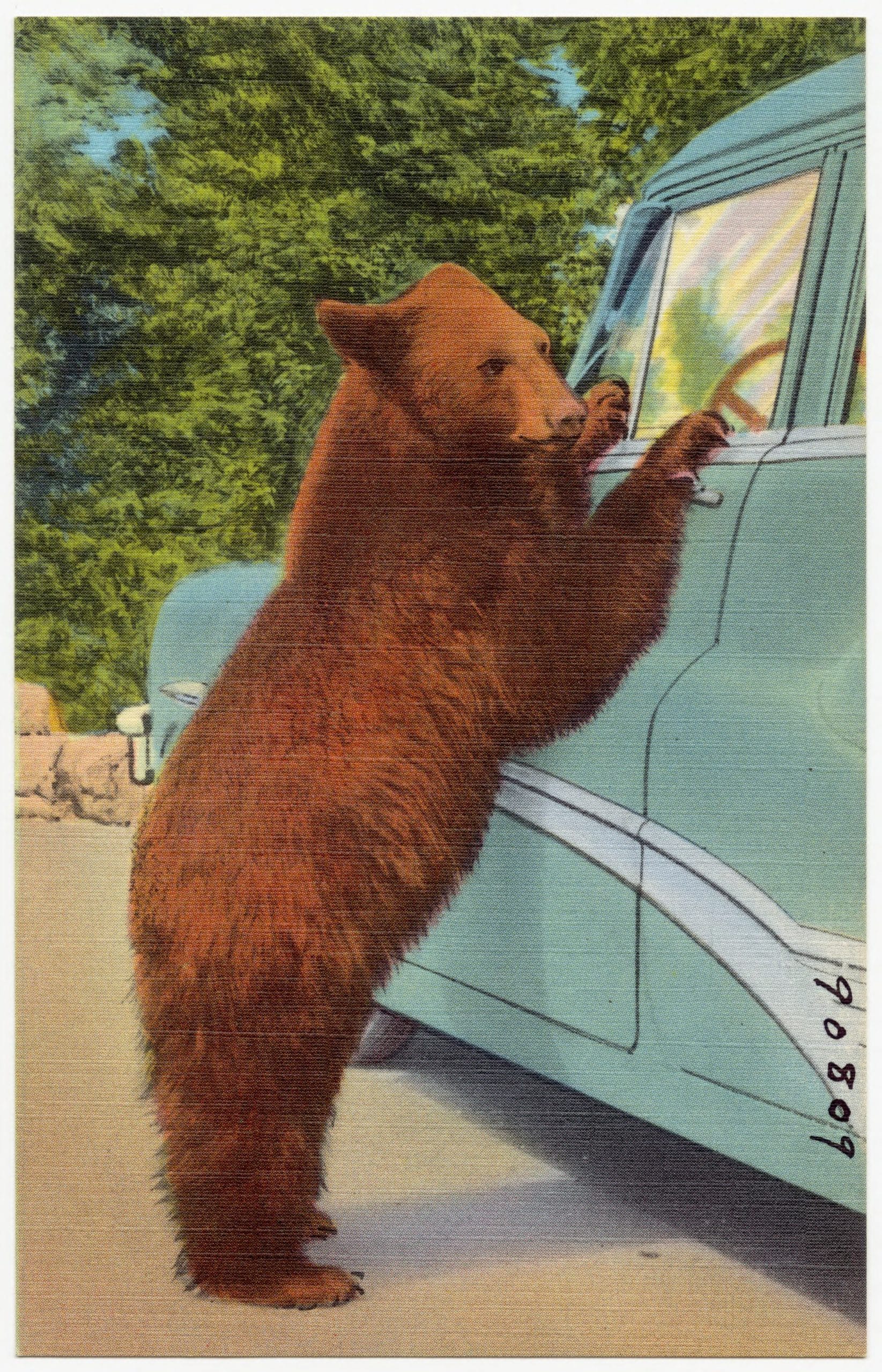
Almost 300 Species Of Migratory Birds
If you’re a bird watcher, there are almost 300 species of birds, including raptors, songbirds, shorebirds, and waterfowl.
Many of these birds are migratory species so, depending on which season you visit, you will be treated to a different variety.
Remember: It’s important to keep a safe distance from wildlife. Unfortunately, the National Park Service reports that each year visitors are injured due to their failure to maintain safe distances.

12. Yellowstone Is The Site Of America’s Greatest Concentration Of Geysers & Hot Springs
At Yellowstone National Park, you will experience the most extraordinary collection of hot springs, geysers, mudpots, and fumaroles on Earth. The park includes over 500 geysers.
There are five types of hydrothermal features readily visible in Yellowstone. They include:
- Hot Springs: Pools of hydrothermally heated water.
- Geysers: Hot springs with constrictions in their plumbing, which causes them to periodically erupt to release the pressure that builds up.
- Mudpots: Hot springs that are acidic enough to dissolve the surrounding rock, and typically also lack water in their systems.
- Travertine Terraces: Hot springs that rise up through limestone, dissolve the calcium carbonate, and deposit the calcite that makes the travertine terraces.
- Fumaroles: These hot features, also known as steam vents, lack water in their system, and instead constantly release hot steam. (Source: National Park Service)
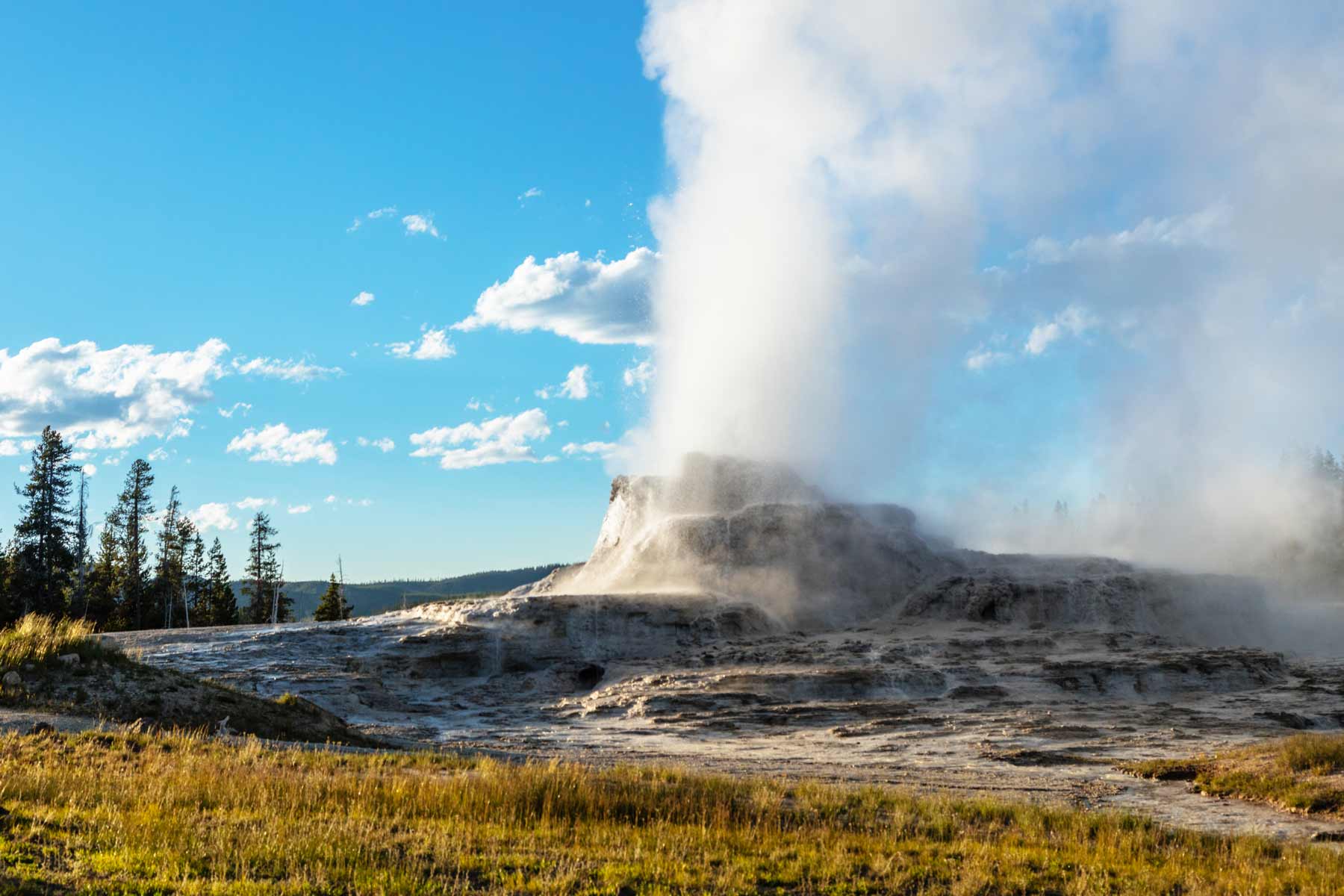
CHECK OUT: All 63 US National Parks Ranked By Experts
13. Yellowstone Has Some Very High Elevations
At Yellowstone, you will truly feel like you’re above the clouds especially if you travel to some of its higher elevations. One place worth visiting is Dunraven Pass.
It’s a high mountain pass at an elevation 8,878 feet above sea level.
If you take the Grand Loop Road you’ll see some stunning panoramic views. It’s a fun ride, but with all of the twists and turns, please drive carefully.
Due to the winter weather, Dunraven Pass closes in October and doesn’t open again until the end of May.
Another great place to visit is Eagle Peak. At 11,372 feet, it’s the highest point in Yellowstone. The mountain is a popular spot with climbers in Yellowstone, but it’s quite difficult to access.
It involves long hikes through the wilderness to reach the top so you need to decide if it’s the right trip for you.

14. There Are Almost Three Hundred Waterfalls Inside The Park
So many waterfalls. So little time. Since you won’t be able to see all of the falls, it might be helpful to know which ones you should check out.
Firehole Falls is one of the most accessible and stunning waterfalls in Yellowstone. To get there you take the Firehole Canyon Scenic Drive, which is well worth the trip as you will be surrounded by some truly breathtaking scenery.
Gibbon Falls is another one definitely worth seeing. It’s an easy drive from the park’s entrance at West Yellowstone.
You’ll be impressed with the beautiful pine tress and rugged cliffs as you make your way to this wonderful spot.
If you travel just south of Old Faithful, you can see another incredible fall. Kepler Cascades, where the Firehole River narrows and descends into a glistening pool, provides a dramatic scenic backdrop from which to gaze at this 150 foot wonder.

Walk quietly in any direction and taste the freedom of the mountaineer.
-John Muir
15. Yellowstone is a Super Volcano
A super-volcano is an unusually large volcano having the potential to produce an eruption with major effects on the global climate and ecosystem. If another large, caldera-forming eruption were to occur at Yellowstone, its effects would be felt worldwide.
An eruption of this magnitude would result in falling ash.
It would produce changes to global climate patterns which would last decades. Montana, Idaho, and Wyoming would be affected by pyroclastic flows (i.e., lava) while other parts of the U.S. would experience falling ash.
Such eruptions produce broad volcanic depressions (i.e., calderas) created as the ground surface collapses as a result of withdrawal of partially molten rock (magma) below.
Now that you’re totally terrified, the odds of this happening in the next several thousand years are extremely small. So relax and enjoy the park.
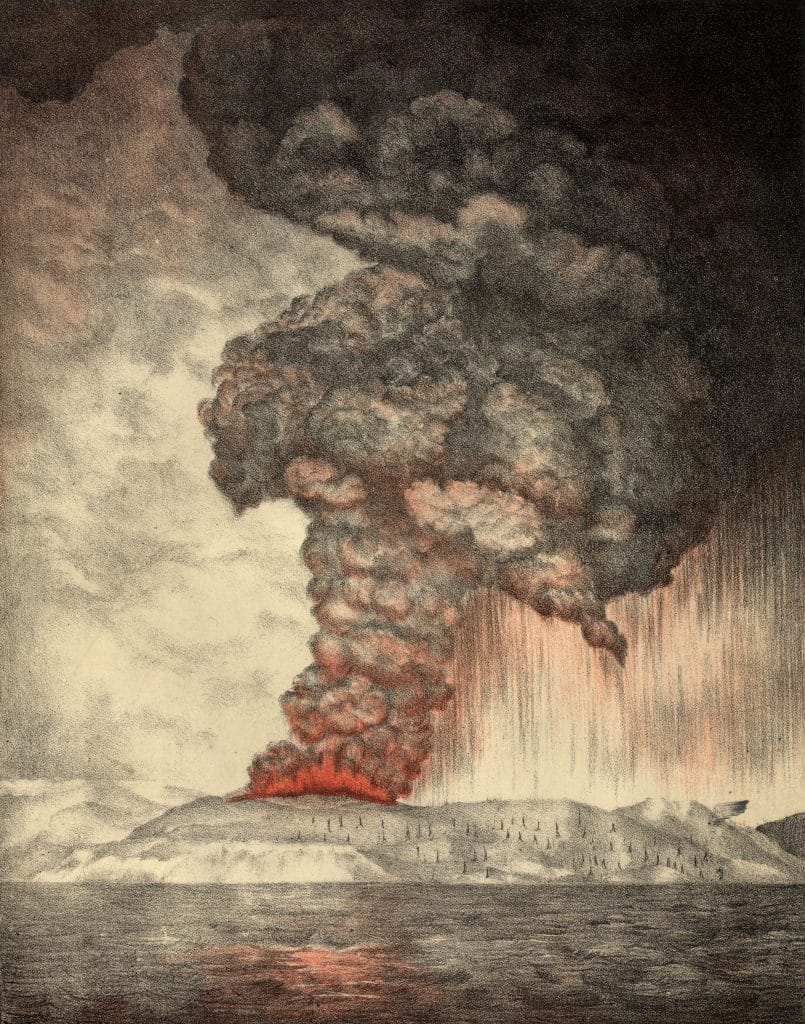
Top 18 Yellowstone National Park Facts
16. Yellowstone Is Actually Larger Than Two U.S. States–Combined
Another amazing Yellowstone National Park Fact is that Yellowstone encompasses 3,472 square miles (2,221,766 acres). This makes it larger than the states of Rhode Island and Delaware combined.
And, what’s even more amazing is that Yellowstone is not even one of the top five largest national parks in the United States.

Which national parks are the largest?
According to the National Park Service, these are the top 10 largest national parks:
- Wrangell-St. Elias (8,323,146.48 acres, in Alaska)
- Gates of the Arctic (7,523,897.45 acres, also in Alaska, the northernmost national park in the country)
- Denali (4,740,911.16 acres, where else? Alaska)
- Katmai (3,674,529.33 acres, Alaska)
- Death Valley (3,408,406.73 acres, California/Nevada, biggest in the lower 48, and the hottest place on the continent)
- Glacier Bay (3,222,383.43 acres, back to Alaska)
- Lake Clark (2,619,816.49 acres, Alaska)
- Yellowstone (2,219,790.71 acres, Wyoming/Montana/Idaho, the first national park, created in 1872)
- Kobuk Valley (1,750,716.16 acres, Alaska)
- Everglades (1,508,938.57 acres, Florida)
17. The Park Is The Make Believe Home To Yogi Bear
You’ve probably seen from the GEICO TV Commercial, “Yogi Bear Joins the BBQ.” Before he was doing television commercials, however, Yogi was the star of a popular children’s show. For you TV buffs, Yogi made his debut in 1958 as a supporting character in The Huckleberry Hound Show.
Yogi got his own show in 1961. He must have had a good agent. From 1961 until 1991, Yellowstone National Park’s most famous bear (please forgive me, Smokey) appeared in a succession of TV series.
There were eight shows in all. They included: The Yogi Bear Show, Yogi Bear & Friends, Yogi’s Gang, Yogi’s Space Race, Galaxy Goof-Ups, Yogi’s Treasure Hunt, The New Yogi Bear Show, and Yo Yogi. And, if that’s not enough Yogi, you can find Yogi in 2021 on HBO’s Jellystone.
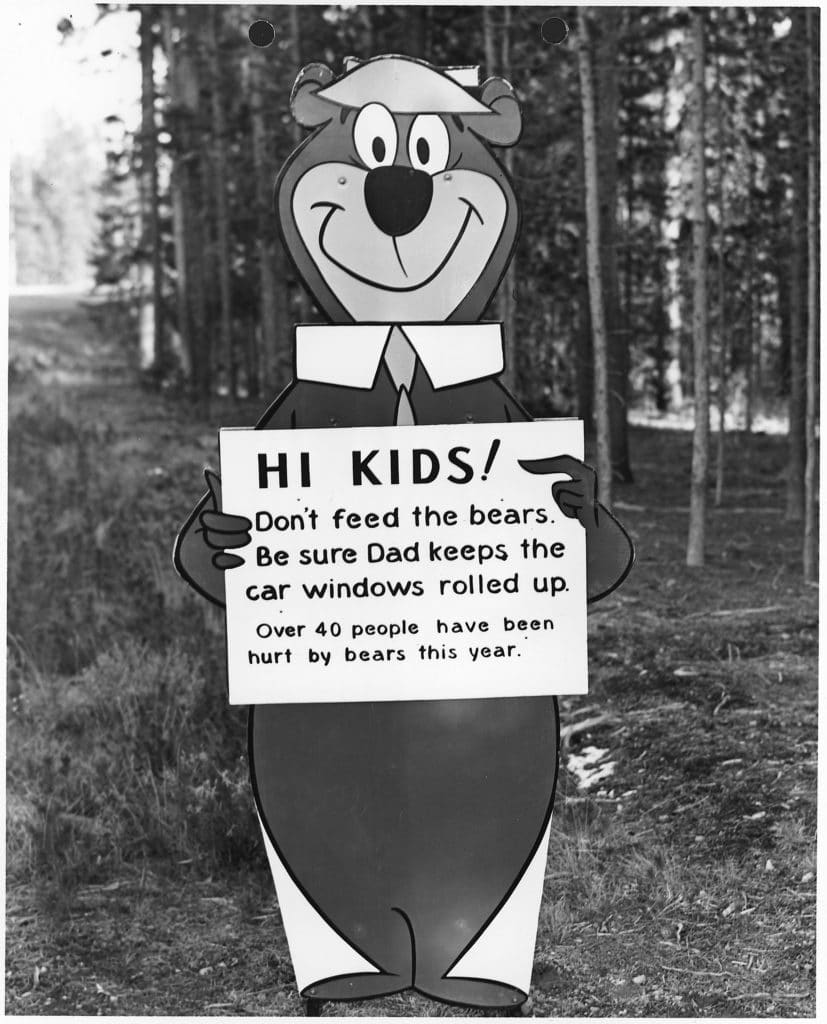
Jellystone Was Yellowstone
Jellystone was the fictitious park where Yogi’s adventures took place (until he decided to go into outer space). The inspiration for Jellystone was none other than Yellowstone National Park.
The show was inspired by Yellowstone’s magnificent mountains, fabulous forests, wonderful waterfalls, and gorgeous geysers. There’s a lot there to keep cartoonists busy!
Technically, of course, they didn’t actually film the show at Yellowstone National Park. Since it was a cartoon, they didn’t actually film it anywhere.
Nevertheless, the next time you visit America’s oldest national park, I hope you’ll remember when you were growing up. What was your favorite television show? And did it have a bear?

RELATED: Look Familiar? 10+ CLASSIC Television Shows Filmed In The National Parks
18. Yellowstone Features Some Wonderful “Trailside” Museums
If you love to learn the stories behind amazing places like Yellowstone National Park then a great place to go is to a museum. And, in the case of Yellowstone, the park features some wonderful trailside museums.
The Madison Museum, which is located near the junction of the Gibbon and Firehole Rivers, is one of a series of “trailside museums” designed by architect Herbert Maier in a style that has become known as National Park Service Rustic.
It was listed on the National Register of Historic Places in 1982, and is one of three parts of a 1987-declared National Historic Landmark, the Norris, Madison, and Fishing Bridge Museums.
Built in 1929, the Madison Museum is the smallest of the three.
It is sited on a small rise that overlooks the meadows and canyon of the Madison River, and still fulfills its function as an informal interpretive center.

Why Trust Us About Yellowstone National Park?
We’re Jim Pattiz and Will Pattiz, collectively known as the Pattiz Brothers (and sometimes the Parks Brothers) and we absolutely LOVE the national parks.
You should probably know that we don’t just make this stuff up out of thin air. We’ve spent our entire adult lives exploring and filming America’s national parks and public lands.
We’ve worked with the National Park Service, the Department of Interior, USDA, and the U.S. Forest Service for years creating films on important places and issues. Our work has been featured in leading publications all over the world and even some people outside of our immediate family call us experts on the national parks.

Meet The Parks Brothers
Map Of Yellowstone National Park
18 Fascinating Facts About Yellowstone National Park
- Yellowstone Contains Some Of The Oldest Rocks In The World
- The Park Is One Of The World’s Largest Active Volcanic Systems
- More Than 1,850 Archaeological Sites Have Been Documented In Yellowstone National Park
- Some 27 Modern-Day Native American Tribes Trace Their Ancestry To Yellowstone National Park
- The First White Man To Visit Yellowstone Was A Member Of The Lewis & Clark Expedition
- No One Believed The Wonders Of Yellowstone Were Real Until The Washburn-Langford-Doane Expedition
- A Man Who Was Lost & Alone Who Survived 37 Days In Yellowstone
- America’s First National Park Could Have Been The Last
- America’s First National Park Ranger Served At Yellowstone
- America’s First Female Park Ranger Also Served At Yellowstone
- Yellowstone Features The Largest Concentration Of Wildlife In The Continental U.S.
- Yellowstone Is The Site Of America’s Greatest Concentration Of Geysers & Hot Springs
- Yellowstone Has Some Very High Elevations
- There Are Almost Three Hundred Waterfalls Inside The Park
- Yellowstone is a Super Volcano
- Yellowstone Is Actually Larger Than Two U.S. States–Combined
- The Park Is The Make Believe Home To Yogi Bear
- Yellowstone Features Some Wonderful “Trailside” Museums
We Hope You’ll Follow Our Journey

Our goal here at More Than Just Parks is to share the beauty of America’s national parks and public lands through stunning short films in an effort to get Americans and the world to see the true value in land conservation.
We hope you’ll follow our journey through the parks and help us to keep them the incredible places that they are. If you’re interested in joining the adventure then please sign up below!
Helpful Related Articles
Things to Do Yellowstone: 15 Best Things to Do Yellowstone National Park
The Lamar Valley: Lamar Valley: A Trip to Yellowstone’s Best Wildlife Viewing Spot
Yellowstone Facts: 10 Amazing Yellowstone National Park Facts
Where to Stay in Yellowstone: Where to Stay in Yellowstone – Best Hotels + Helpful Guide
Best Airports Near Yellowstone: The Best Airports Near Yellowstone National Park
The Wyoming National Parks: 10 Epic Wyoming National Parks: The Complete Guide (+ Photos)
Mount Rushmore to Yellowstone: Driving Mount Rushmore to Yellowstone National Park Road Trip
Grand Teton Hikes: 18 Epic Grand Teton National Park Hikes (Photos + Guide)
Grand Teton Guide: Grand Teton National Park Ultimate Guide
Things to Do Grand Teton: 17 Epic Things to Do Grand Teton National Park
Grand Teton Maps: The Best Maps for Grand Teton National Park
yellowstone national park facts, facts about yellowstone national park, yellowstone national park facts, facts about yellowstone national park, yellowstone national park facts, facts about yellowstone national park, yellowstone national park facts, facts about yellowstone national park, yellowstone national park facts, facts about yellowstone national park, yellowstone national park facts, facts about yellowstone national park, yellowstone national park facts, facts about yellowstone national park, yellowstone national park facts, facts about yellowstone national park, yellowstone national park facts, facts about yellowstone national park, yellowstone national park facts, facts about yellowstone national park, yellowstone national park facts, facts about yellowstone national park, yellowstone national park facts, facts about yellowstone national park, yellowstone national park facts, facts about yellowstone national park,
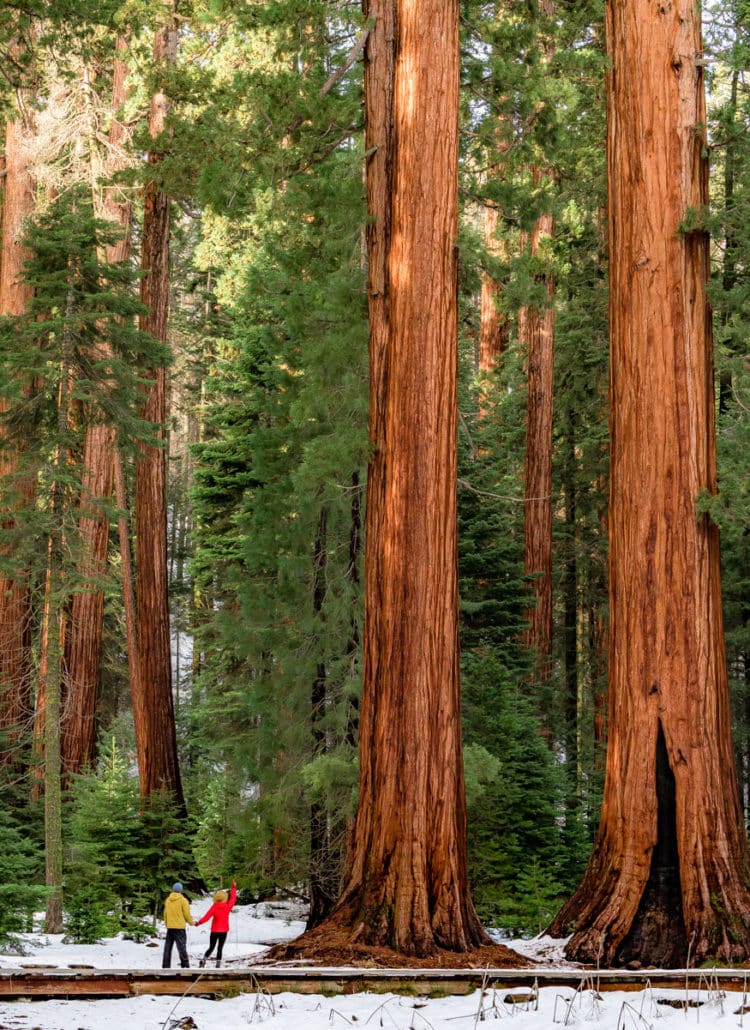
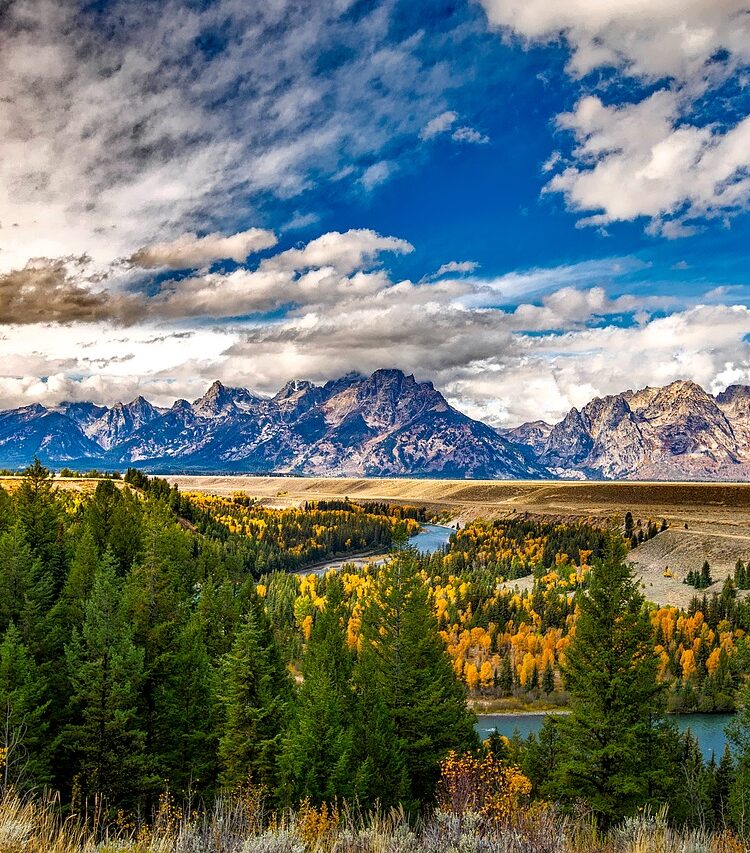



Leave a Reply